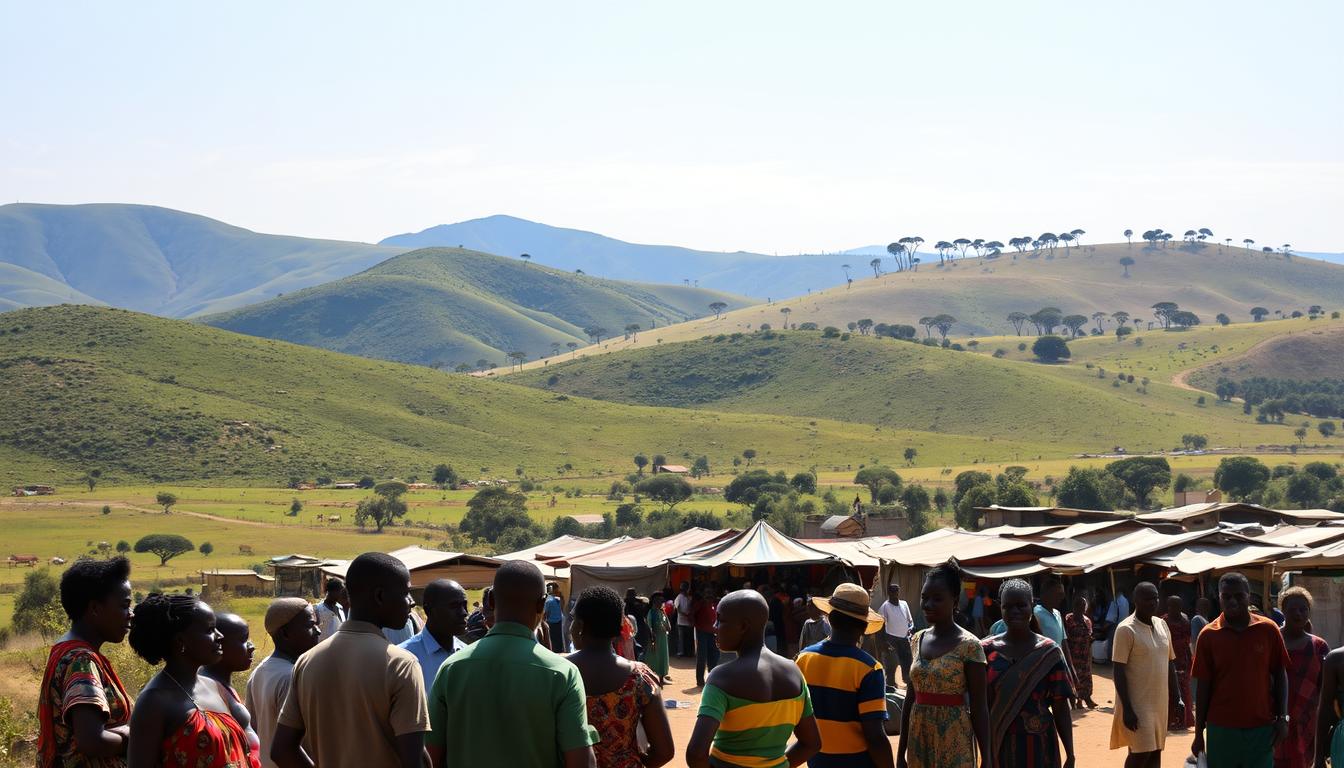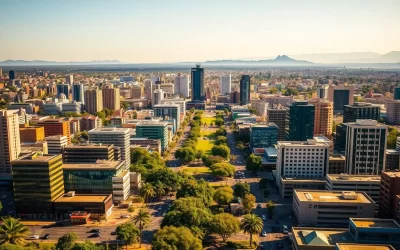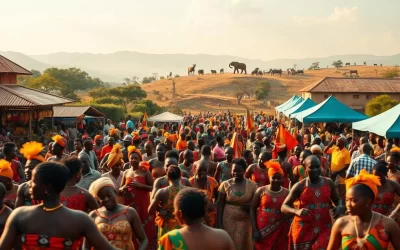Have you ever wondered how a single country can be home to over 60 unique languages? Kenya, a vibrant nation in East Africa, offers a fascinating glimpse into linguistic diversity. With English and Swahili as its official languages, the country blends global influence with rich cultural heritage.
English plays a key role in government, business, and education. Swahili, on the other hand, is the heart of daily communication and cultural identity. Together, they create a unique linguistic landscape that reflects Kenya’s history and unity.
Beyond these two, indigenous languages like Kikuyu, Luo, and Maasai add depth to the nation’s identity. This diversity not only connects people but also preserves centuries-old traditions. Ready to explore more about Kenya’s languages? Let’s dive in!
Key Takeaways
- Kenya has two official languages: English and Swahili.
- Over 60 indigenous languages are spoken across the country.
- English is widely used in formal settings like education and business.
- Swahili is central to daily communication and cultural expression.
- Language diversity helps preserve Kenya’s rich cultural heritage.
Introduction to Kenya’s Linguistic Landscape
In the heart of East Africa, a tapestry of languages weaves together a rich cultural narrative. This vibrant nation is home to over 60 distinct dialects, each reflecting a unique history and identity. From the bustling cities to the serene countryside, the way people communicate tells a story of unity and diversity.
Understanding the Multilingual Heritage
Kenya’s linguistic roots run deep, with three major language families: Bantu, Cushitic, and Nilotic. These families have evolved over centuries, shaped by migration, trade, and cultural exchange. For example, Swahili, a Bantu language, has been influenced by Arabic due to historical trade relations along the coast.
Indigenous languages like Kikuyu, Luo, and Maasai are more than just tools for communication. They are vessels of tradition, carrying the wisdom and stories of generations. This multilingual heritage is a testament to the resilience and adaptability of Kenya’s people.
The Role of Ethnic Diversity
With over 40 ethnic groups, Kenya’s linguistic diversity is a reflection of its cultural richness. Each group brings its own dialect, adding to the national mosaic. Swahili serves as a bridge, enabling communication across different communities and fostering a sense of unity.
Education and media play a crucial role in bridging language gaps. Schools transition from mother-tongue instruction to English and Swahili as students progress. Meanwhile, radio stations and newspapers cater to various language groups, ensuring everyone stays connected.
| Language Family | Examples | Speakers (Millions) |
|---|---|---|
| Bantu | Kikuyu, Luhya | 17.1 |
| Nilotic | Luo, Maasai | 11.1 |
| Cushitic | Somali, Oromo | 6.8 |
East Africa’s influence is evident in Kenya’s linguistic evolution. The region’s shared history and interconnectedness have shaped the way languages develop and interact. This dynamic landscape continues to evolve, reflecting the ever-changing nature of culture and communication.
The Official Languages of Kenya
Kenya’s linguistic framework is built on two pillars: English and Swahili. These languages serve distinct yet complementary roles, shaping the nation’s identity and daily life. While English dominates formal settings, Swahili connects people in their everyday interactions.
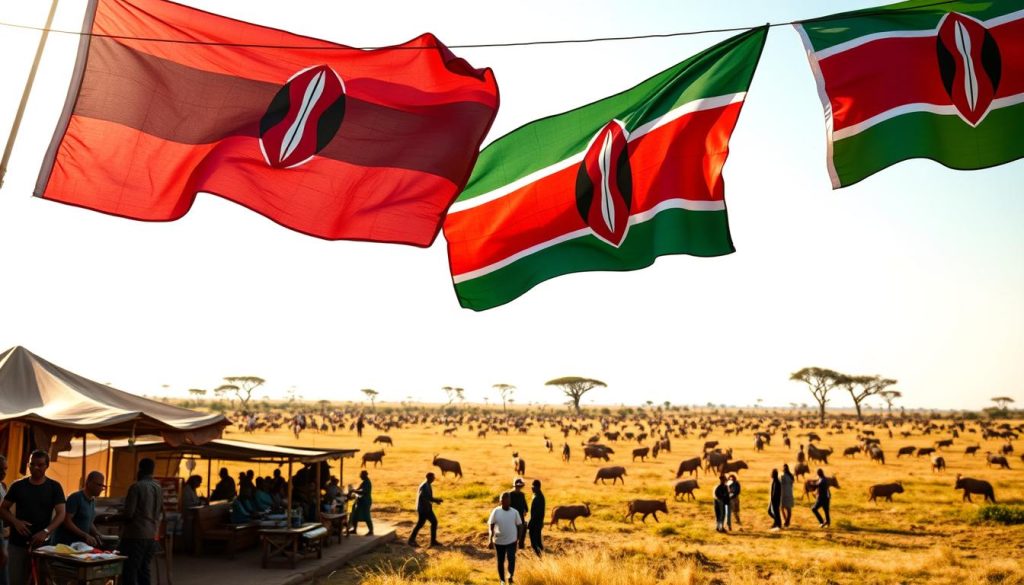
The Importance of English in Government and Business
English plays a central role in formal sectors. It is the primary language for government documents, legal proceedings, and higher education. This legacy stems from Kenya’s colonial history, but its relevance continues today.
In the business world, English bridges communication gaps. It is the preferred language for corporate meetings, contracts, and international trade. This ensures Kenya remains competitive in the global market.
Swahili as the Language of Daily Communication
Swahili, on the other hand, is the heart of everyday life. It is widely used in local markets, schools, and media. This language fosters unity among diverse communities, making it a cornerstone of Kenyan culture.
Small-scale trade thrives on Swahili. From street vendors to community gatherings, it is the go-to language for informal interactions. Its simplicity and widespread use make it accessible to all.
Here’s a quick comparison of their roles:
- English: Government, education, and international business.
- Swahili: Daily communication, local trade, and media.
Together, these languages create a harmonious balance. They reflect Kenya’s rich history and its dynamic present, ensuring effective communication across all sectors.
Kenya: Official and Widely Spoken Languages
The legal recognition of languages in Kenya shapes its cultural and national identity. English and Swahili are enshrined as the official languages, a status supported by the constitution. This framework ensures their use in government, education, and media, fostering unity and preserving traditions.
Legal Framework and National Policy
Kenya’s constitution mandates the use of English and Swahili in official settings. Court documents, legislative proceedings, and government communications rely on these languages. This legal backing ensures clarity and consistency in national affairs.
Education policies also reflect this recognition. Schools teach both languages, with Swahili being a mandatory subject up to high school. This approach prepares students for both local and global opportunities.
Cultural Preservation Through Language
Swahili, in particular, plays a vital role in cultural preservation. It is the language of everyday communication, connecting diverse communities. Its use in media, music, and literature keeps traditions alive.
English, while formal, also contributes to cultural exchange. It bridges Kenya with the global community, enabling the sharing of ideas and innovations.
| Language | Role | Impact |
|---|---|---|
| Swahili | Daily communication, media | Preserves cultural identity |
| English | Government, education | Facilitates global connections |
Examples from court documents and educational materials highlight this dual role. For instance, legal rulings often cite Swahili proverbs, blending tradition with modern law. Textbooks, meanwhile, use both languages to ensure accessibility and inclusivity.
Regional Languages and Ethnic Diversity
Exploring the linguistic diversity of Kenya reveals a vibrant mosaic of regional dialects and ethnic traditions. Beyond the official languages, the country is home to dozens of indigenous tongues, each reflecting unique cultural roots. These languages are more than just communication tools—they are pillars of identity and heritage.
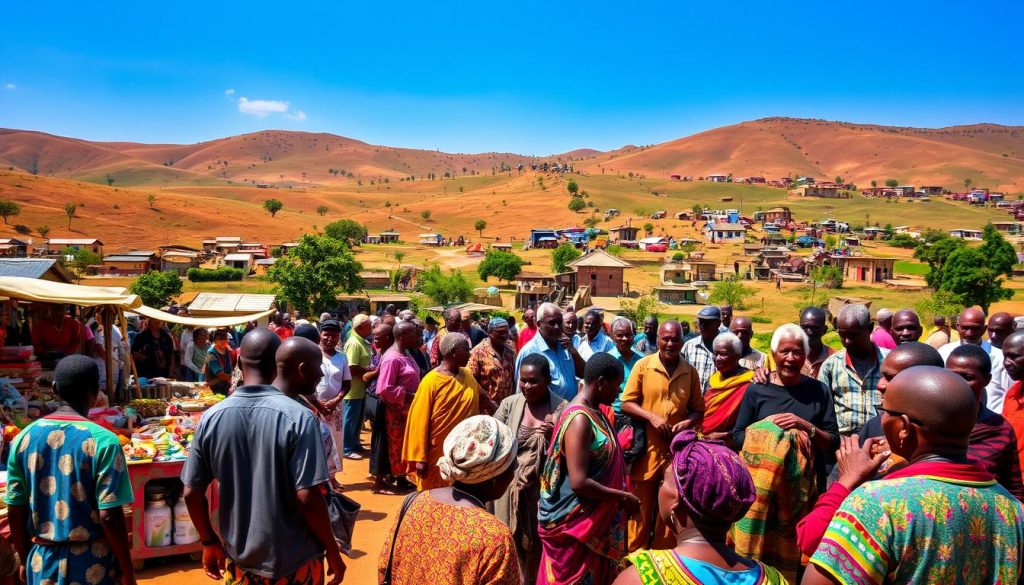
Kikuyu and Other Bantu Languages
One of the most widely spoken indigenous languages is Kikuyu. With millions of speakers, it represents a significant portion of the population. Kikuyu is part of the larger Bantu language family, which includes other prominent dialects like Luhya and Kamba.
Bantu languages dominate central and western regions. They are known for their rich oral traditions and role in preserving cultural practices. For example, proverbs and folktales in these dialects pass down wisdom from generation to generation.
Nilotic and Cushitic Language Groups
In contrast, the Nilotic and Cushitic language families are prominent in the northern and eastern parts of the country. The Kalenjin, a Nilotic group, speaks dialects like Nandi and Kipsigis. These language families are deeply tied to pastoralist traditions and rural lifestyles.
Cushitic languages, such as Somali and Oromo, are spoken by smaller communities but play a vital role in maintaining ethnic identity. Together, these groups contribute to Kenya’s linguistic richness.
| Language Family | Examples | Speakers (Millions) |
|---|---|---|
| Bantu | Kikuyu, Luhya | 17.1 |
| Nilotic | Kalenjin, Luo | 11.1 |
| Cushitic | Somali, Oromo | 6.8 |
In rural areas, these languages are essential for daily life and community bonding. They connect people to their heritage and ensure that traditions remain alive. Whether through storytelling, music, or rituals, Kenya’s linguistic diversity is a testament to its cultural resilience.
The Role of Language in Preserving Culture
Language is more than just words—it’s the heartbeat of culture. It carries the stories, traditions, and values of a community, passing them from one generation to the next. Through language, families connect, and cultural identity remains strong.
In many communities, indigenous dialects are the foundation of daily life. They are used in storytelling, rituals, and celebrations, ensuring that traditions are not forgotten. For example, proverbs and folktales in local languages teach moral lessons and preserve historical knowledge.
Education plays a vital role in this process. When children learn in their mother tongue, they develop a deeper connection to their heritage. Schools that incorporate local languages into their curriculum help reinforce cultural identity. This approach also fosters pride in one’s roots.
Here’s how language supports cultural preservation:
- It acts as a bridge between generations, keeping traditions alive.
- It strengthens family bonds by enabling shared experiences.
- It safeguards oral literature, such as myths and legends.
- It promotes inclusivity in education, making learning more accessible.
Indigenous languages are also a source of pride. They reflect the unique identity of a community and its history. Efforts to preserve these dialects, such as cultural festivals and educational programs, ensure that they continue to thrive.
| Role of Language | Impact on Culture |
|---|---|
| Intergenerational communication | Preserves traditions and values |
| Family bonding | Strengthens shared identity |
| Education in mother tongue | Reinforces cultural pride |
| Oral literature | Safeguards historical knowledge |
By appreciating the intrinsic link between language and culture, you can better understand the richness of diverse communities. Every word spoken is a step toward preserving a legacy that spans centuries.
Impact of Indigenous Languages on Education and Trade
How do indigenous languages shape learning and commerce in diverse communities? These languages play a vital role in both education and trade, influencing how people connect, learn, and grow. Let’s explore their impact in more detail.
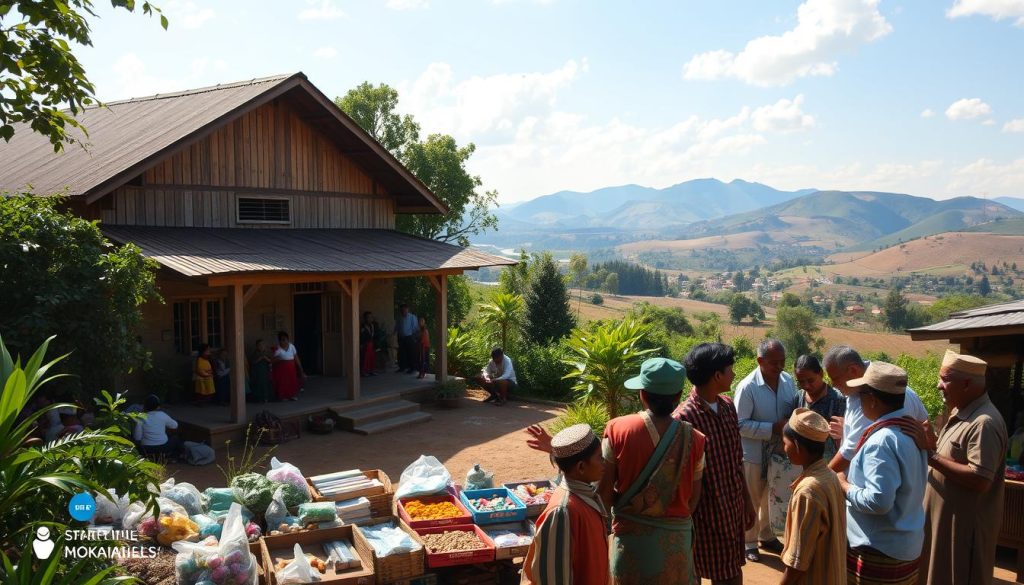
Classroom Instruction and Literacy
In many rural areas, local languages are the foundation of early education. Children start learning in their mother tongue, which helps them grasp basic concepts more easily. This approach boosts confidence and improves literacy outcomes.
As students progress, they transition to English and Swahili. This shift ensures they are prepared for higher education and global opportunities. However, the initial use of indigenous languages fosters a deeper connection to their cultural roots.
Here’s how indigenous languages benefit school systems:
- They make learning more accessible for young children.
- They preserve cultural identity and traditions.
- They improve comprehension and retention of complex topics.
Trade and Business Literacy
Indigenous languages also play a key role in local trade. In markets and small businesses, these languages facilitate communication and build trust. For many persons, using their mother tongue in commerce feels natural and inclusive.
However, challenges arise when dealing with larger markets or international partners. This is where English and Swahili become essential. Balancing both worlds ensures communities thrive locally while staying connected globally.
Here’s a breakdown of their roles in trade:
| Language | Role in Trade |
|---|---|
| Indigenous Languages | Local markets, small businesses, community trust |
| English and Swahili | Larger markets, international partnerships |
The personal impact of using indigenous languages is profound. For learners, it builds confidence and a sense of belonging. For traders, it strengthens relationships and fosters community growth. These languages are more than tools—they are bridges to opportunity.
Urban Language Evolution: The Phenomenon of Sheng
In the bustling streets of Nairobi, a unique linguistic phenomenon thrives, blending cultures and generations. Sheng, a vibrant urban slang, has become the heartbeat of the city, mixing Swahili, English, and local dialects. This creative language reflects the dynamic spirit of Kenya’s youth.
Cultural Fusion in Nairobi’s Streets
Sheng emerged in the 1960s as a way for young people to connect across ethnic lines. It combines Swahili grammar with English vocabulary and borrows words from local dialects like Kikuyu and Luo. This mix creates a language that is both familiar and fresh.
For example, the word “mbao” means money in Sheng, derived from Swahili but used in a new context. Such creativity makes Sheng a living, evolving language that adapts to modern life.
Sheng’s Role in Youth Identity
For many young people in Nairobi, Sheng is more than just slang—it’s a marker of identity. It represents their connection to the city and their generation. Through Sheng, they express their views on politics, music, and daily life.
Global influences, including Arabic and hip-hop culture, have also shaped Sheng. This blend of local and global elements makes it a powerful tool for self-expression. As one youth put it, “Sheng is our voice in a changing world.”
From street conversations to popular music, Sheng continues to evolve. It’s a testament to the creativity and resilience of Kenya’s urban youth, proving that language is always alive and adapting.
Challenges in Maintaining Kenya’s Linguistic Diversity
Preserving linguistic diversity is a challenge faced by many nations. In Kenya, the rich tapestry of languages is under threat due to urbanization, modernization, and shifting cultural priorities. While the country boasts over 60 indigenous languages, many are at risk of disappearing.
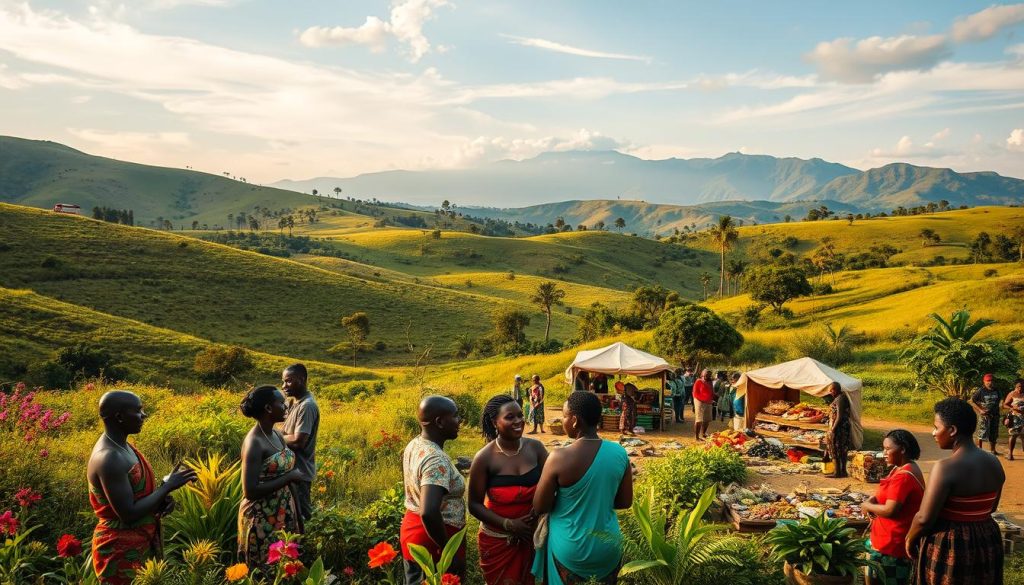
Language Loss in Rural and Urban Areas
In rural areas, the decline of indigenous languages is often linked to migration. Younger generations move to cities for better opportunities, leaving behind their mother tongues. This shift disrupts the intergenerational transmission of language and culture.
Urbanization further accelerates this trend. In cities like Nairobi, over 60% of residents no longer speak their parents’ native language. The dominance of English and Swahili in education and media also marginalizes local dialects, making them less relevant in daily life.
Here’s a quick look at the number of languages at risk:
- Six languages have already become extinct.
- Sixteen are critically endangered, with fewer than 1% of the population speaking them.
Education Policies and Their Impact
Kenya’s education system plays a significant role in this dynamic. While the National Curriculum Policy promotes teaching in indigenous languages up to Grade 3, English takes over from Grade 4. This transition often leaves students disconnected from their cultural roots.
Parents and educators have raised concerns about the effectiveness of this approach. Studies show that children taught in their mother tongue perform better academically. Yet, the focus on English and Swahili continues to overshadow local dialects.
Balancing Preservation and Globalization
Maintaining linguistic diversity requires a delicate balance. On one hand, English and Swahili are essential for global communication and economic opportunities. On the other, indigenous languages are vital for preserving cultural identity and heritage.
Efforts to revitalize endangered languages are underway. The Kenyan Ministry of Education has developed learning materials in 18 indigenous languages. Cultural festivals and community programs also aim to keep these dialects alive.
By raising awareness and supporting these initiatives, you can help ensure that Kenya’s linguistic diversity thrives for generations to come.
Global Influence and Media Representation of Kenyan Languages
The global stage is increasingly embracing the linguistic richness of East Africa. From local dialects to international platforms, Kenyan languages are gaining recognition. This visibility not only promotes cultural exchange but also strengthens cross-border communication.
Communicating Across Borders
English and Swahili play pivotal roles in connecting Kenya to the world. English, as a global language, facilitates international trade, diplomacy, and education. Swahili, on the other hand, serves as a bridge across East Africa, fostering regional unity and collaboration.
Media representation amplifies this influence. Vernacular radio stations, for instance, have grown significantly, with over 30% of radio listenership in Kenya tuning into local language broadcasts. This trend highlights the importance of media in preserving and promoting linguistic diversity.
Media Projects and Government Initiatives
Government efforts are also shaping the global perception of Kenyan languages. The Kenyan Broadcasting Corporation (KBC) allocates airtime for broadcasts in 18 local languages. Similarly, private media companies like Royal Media operate multiple FM stations catering to diverse linguistic communities.
International media projects further enhance this visibility. For example, the BBC’s Swahili service reaches millions across East Africa, showcasing the region’s cultural and linguistic heritage. These initiatives ensure that Kenyan languages remain relevant in a globalized world.
Schools and Cultural Programs Abroad
Educational institutions worldwide are incorporating elements of Kenyan languages into their curricula. Swahili, in particular, is taught in universities across the United States and Europe. This inclusion not only promotes linguistic diversity but also fosters a deeper understanding of East African culture.
Cultural programs, such as language festivals and exchange initiatives, further support this trend. They provide platforms for students and communities to engage with Kenyan languages, enriching their global perspectives.
The Power of Precise Language
In international communication, the choice of words matters. English and Swahili are often used to convey complex ideas with clarity and precision. This ensures that messages resonate across cultural and linguistic boundaries.
For instance, Swahili proverbs are frequently cited in diplomatic speeches, blending tradition with modern discourse. Such usage highlights the enduring relevance of Kenyan languages in global contexts.
By embracing its linguistic diversity, Kenya continues to shape global perceptions of East Africa. Whether through media, education, or diplomacy, its languages serve as powerful tools for connection and cultural exchange.
Conclusion
The linguistic tapestry of this East African nation reflects its vibrant cultural heritage. English and Swahili serve as pillars in education, government, and business, ensuring global connections while fostering local unity. Indigenous dialects, like Kikuyu and Luo, add depth to this rich mosaic, preserving traditions and connecting communities.
This blend of global and local languages shapes the identity of the country. It bridges generations, ensuring that cultural wisdom is passed down. Whether in classrooms, markets, or homes, language plays a pivotal role in daily life.
Respect for this diversity is essential. It not only strengthens cultural pride but also enriches societal bonds. By valuing all language groups, we honor the heritage that makes this nation unique.
We invite you to explore this fascinating linguistic landscape further. Have questions or thoughts? Share them below!
The above is subject to change.
Check back often to TRAVEL.COM for the latest travel tips and deals.
Here are some Tours & Sightseeing suggestions that might pique your interests!
